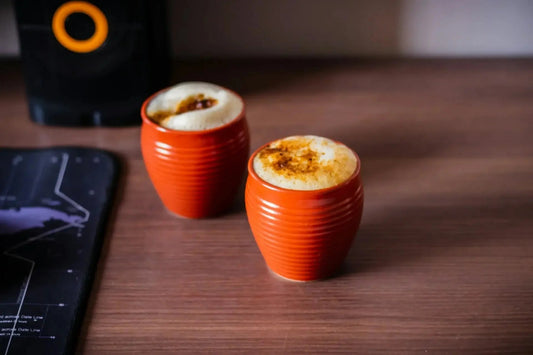
Wet Cappuccino vs. Dry Cappuccino
James Roche
Wet Cappuccino vs. Dry Cappuccino
Introduction
For coffee enthusiasts, cappuccinos are a beloved staple, and they come in two distinct variations: wet and dry. These espresso-based beverages blend rich espresso, velvety steamed milk, and frothy milk foam. In this comprehensive guide, we'll delve into the definitions and nuances of wet cappuccinos, dry cappuccinos, and the heated debate surrounding wet vs. dry cappuccinos.
Wet Cappuccino: The Art of Harmony

What is a wet cappuccino?
A wet cappuccino is made for those who prefer a smoother, milkier coffee. It has an espresso base, steamed milk and a thin layer of foam on top. This results in a less intense coffee flavour and a creamier texture compared to a regular cappuccino.
Let's look at what's in a wet cappuccino:
Espresso: The heart of any cappuccino, espresso is a concentrated coffee shot, brewed under pressure, and infused with rich, bold flavours.
Steamed Milk: Steamed milk is essential in a wet cappuccino. It lends creaminess and softens the intense espresso, creating a well-rounded, velvety texture.
Milk Foam: In a wet cappuccino, the milk foam is present but not overwhelmingly dense. It adds a delicate touch of frothiness, enhancing the overall texture without overpowering the espresso and steamed milk.
Wet cappuccinos are celebrated for their harmony, where the three key components coexist, with none dominating the others. The result is a balanced, medium-bodied coffee experience that maintains the integrity of the espresso while introducing a gentle creaminess.
Dry Cappuccino: A Frothy Espresso Symphony

What is a dry cappuccino?
A dry cappuccino is a coffee drink for those who prefer a stronger coffee flavour with a lighter, airier texture. Dry cappuccinos have an espresso base, a small amount of steamed milk and a thick, foamy top layer. This makes the drink taste more intense and less creamy compared to a regular cappuccino.
Let's see what's in a dry cappuccino:
Espresso: Just like in a wet cappuccino, espresso takes the lead, providing the beverage's strong coffee kick.
Steamed Milk: Steamed milk is still present, but in a dry cappuccino, it's often overshadowed by the other components.
Milk Foam: The defining feature of a dry cappuccino is the thick, dense milk foam that crowns the coffee. It's an essential part of this version, creating a frothy cap that's a visual delight.
Dry cappuccinos are known for their pronounced coffee flavour and the luscious, creamy foam that tops the beverage. The rich milk foam adds a delightful textural element and a layer of sophistication to the coffee, making it a favourite among those who appreciate a more intense coffee experience.
Wet vs. Dry Cappuccino
The wet vs. dry cappuccino debate has sparked discussions among coffee lovers for years. It all boils down to personal preferences. Those who enjoy a harmonious balance of flavours tend to opt for wet cappuccinos, while those seeking a stronger coffee flavour and a frothy, luxurious foam crown gravitate towards dry cappuccinos.
In essence, a wet cappuccino maintains a gentler coffee profile, ideal for savouring the espresso's nuances. In contrast, a dry cappuccino delivers a more robust coffee experience with the added indulgence of a thick, creamy foam layer.
Conclusion
Whether you're team wet cappuccino or team dry cappuccino, both variations offer an exquisite coffee experience. The choice ultimately depends on your preference for balance or boldness. Whichever you choose, cappuccinos, with their rich espresso base and delightful milk components, are a testament to the artistry of espresso-based coffee, making each cup a small but exceptional work of art. Whether you prefer the gentle harmony of a wet cappuccino or the frothy symphony of a dry cappuccino, you're indulging in a beverage that captures the essence of the coffee world. Enjoy the delightful variations of this beloved coffee classic, and savour the nuances of espresso artistry.



